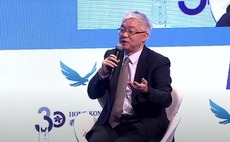
Operational value-add: Active duty
VCs are under pressure to improve operational capacity as competition heats up in Asia’s start-up ecosystems. Methodologies filtering over from the US are finding both disciples and skeptics
When Qiming Venture Partners first invested Gan & Lee Pharmaceuticals in 2010, the company was generating annual revenue of around RMB3 million ($435,000). It is now said to be the largest biotech company in China by revenue and profit with a valuation of more than $1 billion. Qiming, an operationally active investor and still the largest shareholder, boasts considerable expertise in drug manufacturing, but that hasn't come into play so far.
Gan & Lee has always been self-reliant in the factory and claims the largest biologic drug making facility in China. Its bigger challenge was building out internationally with an underperforming distribution system. Qiming stepped in by combing the company's overseas markets one by one and mediating the best course of action for each jurisdiction, whether it be direct selling, distributor partnering, or manufacturer partnering.
That the VC was able to help realize an explosive growth spurt while leaving its proverbial hardhat at home speaks not only to the underlying strengths of the company but also to the increasing sophistication of start-up value-add in Asia. Assistance with accounting, marketing guidance, customer networking, recruitment, and technical developments will always be in the playbook. But now global negotiating capacity is part of the equation, not to mention government relations, and preparation for an offshore IPO.
On another level, the Gan & Lee story illustrates how VC operations in Asia may evolve differently to those in the US. The Silicon Valley template is perhaps best exemplified by Andreessen Horowitz, which has about 35 investment professionals and a staff of technical, policy and business process professionals that numbers in the hundreds. Qiming's model, by contrast, attempts to condense many of these resources into a team of around 60, where senior leadership pulls a flexible kind of double duty.
"What distinguishes Qiming is that all the partners have deep operational experience, while most VCs are from finance backgrounds," says Nisa Leung, a managing partner at the firm, noting the importance of having operationally minded decision-makers at board level. "You may be able to hire HR people and marketing people but that's like hiring an external headhunting or marketing firm. A lot of times, the really deep issues of a company have to do with the deal partner, how you can give recommendations and strategic direction."
The optimal approach
Asia's size, rapid growth, fragmentation, pervasive government participation, and relatively accessible IPO markets for smaller companies translate into a unique environment for the development of operational competency within VC firms. Although it is unclear how this evolution will play out, it appears unlikely that large US-style teams will fit the bill.
The US will inevitably exert its gravity, however, to some extent through the ongoing encroachment of global GPs, but especially through a lower-profile yet omnipresent crosspollination of talent. Hustle Fund, a new US and Singapore-based firm created by two partners at 500 Startups and anchored by a group of Asian technology giants, offers a case in point. The firm has begun importing an operational style characterized by high-intensity six-week engagements followed by ad-hoc support.
Shiyan Koh, a managing partner at Hustle in Singapore, emphasizes that operational challenges vary at different ends of the start-up spectrum. He notes that the most common issue for fast growing businesses involves adjusting communication and prioritization norms to account for the moment when the staff is no longer able to fit around a single table.
"When you're sub-eight people, you know what everyone on the team is doing, it's very easy to clarify issues, and priorities are crystal clear," Koh says. "The moment you have sub-teams and people are not directly connected to the CEO, then companies have to spend some time deliberately thinking about how to communicate priorities, what everyone is working on, and how to work with each other. Because you're in high-growth mode, you're also adding new employees, who then have to be on-boarded and taught how the company works."
This phenomenon can result in a counterintuitive company slowdown, where more resources actually end up inhibiting growth – and the chaos can play out at the macro level as well. A surge in corporate venture capital units (CVCs) in Asia is expected to have ramifications on the development of operational value-add practices by injecting a large amount of technical knowhow and resources into high-growth markets that may not be able to absorb the shock without recoil.
According to Victor Chua, president of the Malaysian Venture Capital Association and a former vice president at China's Gobi Partners, a rapid influx of CVCs will impact venture capitalists in at least two ways. First, the amount of CVC money entering the industry has roughly tripled in the past four years. It could turn out to be easy, unsophisticated capital that will cause uncompetitive start-ups to thrive and good start-ups to develop bad habits. Second, the introduction of strategic, tech-savvy investment channels will push VCs to up their game in value-add.
"If there are more CVCs that can value-add and traditional VCs that are just passively investing, they won't be able to compete," says Chua, who launched his own firm, Vynn Capital, earlier this year. "Right now, CVCs are still trying to learn their way through the whole tech sector, so traditional VCs still have an upper hand. But when the CVCs have learned enough, and they've recruited enough good talent who used to work for other VCs, there will come a point when the financial VCs will become seemingly redundant."
As yet, there is no consensus as to whether increased competition and corporate expertise will change the profile of traditional venture capital firms with regard to their operational teams. This is partially because, even if there are more interested parties from an investment standpoint, operational talent availability is likely to remain a cost-based bottleneck for capacity improvement in value-add.
"If you hire a team specifically dedicated to operations, it puts an expense burden on the management company," says Qiming's Leung. "I think it's important to justify that all the help that is being created from the operations team is really worth the cost. Every fund has their own analysis on what is the right balance."
A helping hand
Relief to the talent dilemma is already emerging in Asia, however, courtesy of another US import: the entrepreneur-in-residence (EIR). The role of an EIR is less transient and guidance-oriented than that of a mentor in that it entails stable, in-house part-time operational collaborators who have recently been successful founding start-ups and who are more likely to be a good cultural fit with the portfolio entrepreneur.
Start-ups can expect to spend hours per week with an EIR tackling early-stage challenges with an emphasis on legwork and actionable advice. The idea is to bridge the communication gap between VCs and their portfolio companies by creating an environment of trust among fellow entrepreneurs.
The concept is not yet entrenched in Asian VC culture. Qiming and Hustle, for example, do not have EIRs on staff, although Vynn has three. Some regionally active investors such as 500 Startups and East Ventures are known to allocate one per country in their major focus jurisdictions, although this is not consistent.
"Meeting entrepreneurs on the first day is very natural because we already knew each other from networking events and we see each other as friends," says Steven Suliawan, a former Indonesia-based EIR for East Ventures. "Being a founder is sometimes a lonely job. So being there as a partner, not as a boss, really helps a portfolio. They can open up a little bit more."
Suliawan's story says much about the need for operational talent in Asia and how future solutions to the issue may be deceptively simple. He describes about 60% of his EIR work as opening job posts and filtering talent to support portfolio start-ups in need. These efforts sparked the idea of Ekrut, a jobs marketplace for technology specialists. East Ventures went on to invest the company last year and Suliawan still liaises with the firm.
Idea generation and relationship building aside, the main objective of any EIR program is to facilitate the execution of practical company building initiatives. In practice, this most often boils down to the surprisingly difficult work of discouraging entrepreneurs from making assumptions about their target markets. It's a reminder that there may be nothing less mundane than discipline, but nothing less essential.
"Instead of just assuming that a customer wants something, we do a survey to understand what the customer really wants. As basic as that is, a lot of start-ups make assumptions and launch products by instinct rather than do the dirty work of surveying people," Suliawan says. "They already know this stuff – they're good entrepreneurs. But it helps that we can remind them because sometimes they get busy with the day-to-day."
SIDEBAR: Inside story – Entrepreneur-in-residence
The earlier an investor participates in the lifecycle of a business, the more operational support begins to look like life support. In this light, it may come as little surprise that the entrepreneur-in-residence (EIR), is one of the most underappreciated but fundamentally decisive roles in venture capital.
Few people understand this better than Itai Damti, the CEO of Hong Kong financial technology consultancy Antifragile and EIR for US-based 500 Startups. Damti has been dispatched to work with more than 40 start-ups since May last year, focusing on fintech for 500 Startups and, previously, hardware for Chinese internet-of-things accelerator HAX.
He describes the most important part of the job as "helping founders avoid start-up death" through the highlighting of often-ignored risks during the feverish, cash-burning stages of initial company creation. This work is not easily done without a grasp of the economics and challenges facing any given business, which takes time.
"For the start-up, spending 30 hours with the same person goes much further than spending the same 30 hours interacting with 30 different mentors," Damti explains. "It's priceless when you have the ability to go deep, share bumps along the road and really think things through with someone you trust."
To this point, it's worth emphasizing that EIRs are only shoulder-to-shoulder with entrepreneurs for a negligible percentage of their time, and therefore simply don't have the power to transform a company. That power rests entirely with the founders, especially CEOs, whose personalities and work-styles are roundly recognized as impossible to remold.
Damti observes that the best early-stage entrepreneurs are coachable to some extent, however, and take full advantage of EIRs. Their less capable competitors, meanwhile, tend to be less interested. "Funnily, founders who use you the most need you the least," he says.
This does not mean that uninvolved founders are necessarily less promising investment prospects. They typically cite either incompatible personalities or insufficiently deep technical knowhow as reasons for dismissing a program. In case of the latter, the EIR is recommended to step aside.
Damti's areas of expertise include cryptocurrency, data science, machine learning, and hardware. He started his entrepreneurial career by co-founding foreign exchange software-as-a-service company Leverate in 2008. The company went on to sell a 25% stake to Denmark's Saxo Bank for a reported $12.5 million, allowing Damti to set up its Asia headquarters in Hong Kong in 2012 before beginning work on Antifragile.
"Being a fintech EIR at 500 Startups, I spent my days working with about 15 portfolio companies in San Francisco, reviewing additional potential investments with the fintech partners, networking with other funds and ideating for the next fintech company I hope to start," Damti says. "I try to help founders obsess with the biggest risks they face and execute to remove those risks."
These discussions involve product and go-to-market decisions in most cases, but the impact of EIR programs varies widely across funds, industries, and individuals. Perhaps the only commonality is the focus on high-touch operational support at a dicey stage of development – and its nearly invisible hand in entrepreneurial survival.
"It's not a glamorous role, and your success is simply about preventing unnecessary start-up death," Damti says. "Help founders with that, and ultimately, with the right market, hard work, learning, and a good amount of luck, they have a much higher chance to succeed."
Latest News
Asian GPs slow implementation of ESG policies - survey
Asia-based private equity firms are assigning more dedicated resources to environment, social, and governance (ESG) programmes, but policy changes have slowed in the past 12 months, in part due to concerns raised internally and by LPs, according to a...
Singapore fintech start-up LXA gets $10m seed round
New Enterprise Associates (NEA) has led a USD 10m seed round for Singapore’s LXA, a financial technology start-up launched by a former Asia senior executive at The Blackstone Group.
India's InCred announces $60m round, claims unicorn status
Indian non-bank lender InCred Financial Services said it has received INR 5bn (USD 60m) at a valuation of at least USD 1bn from unnamed investors including “a global private equity fund.”
Insight leads $50m round for Australia's Roller
Insight Partners has led a USD 50m round for Australia’s Roller, a venue management software provider specializing in family fun parks.








